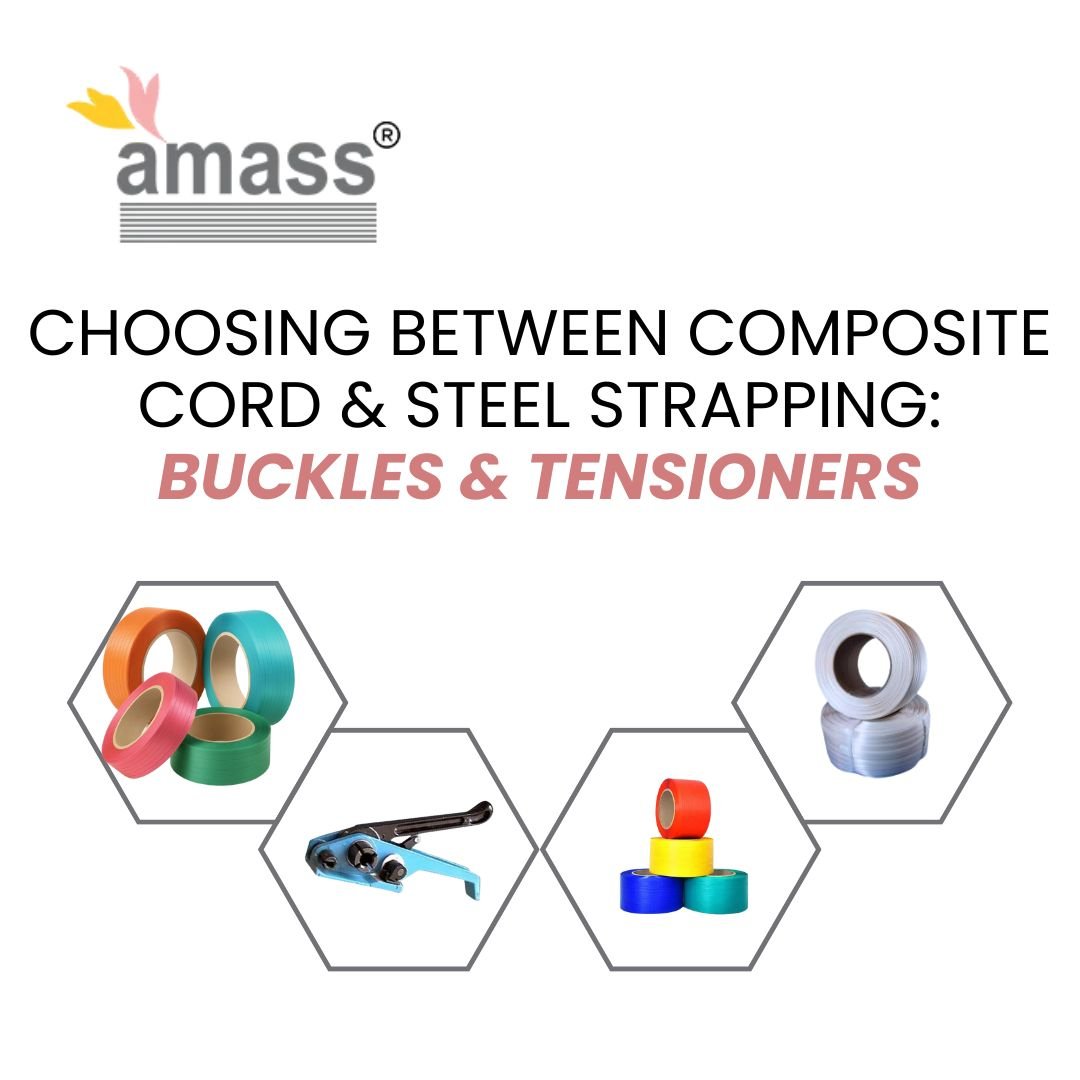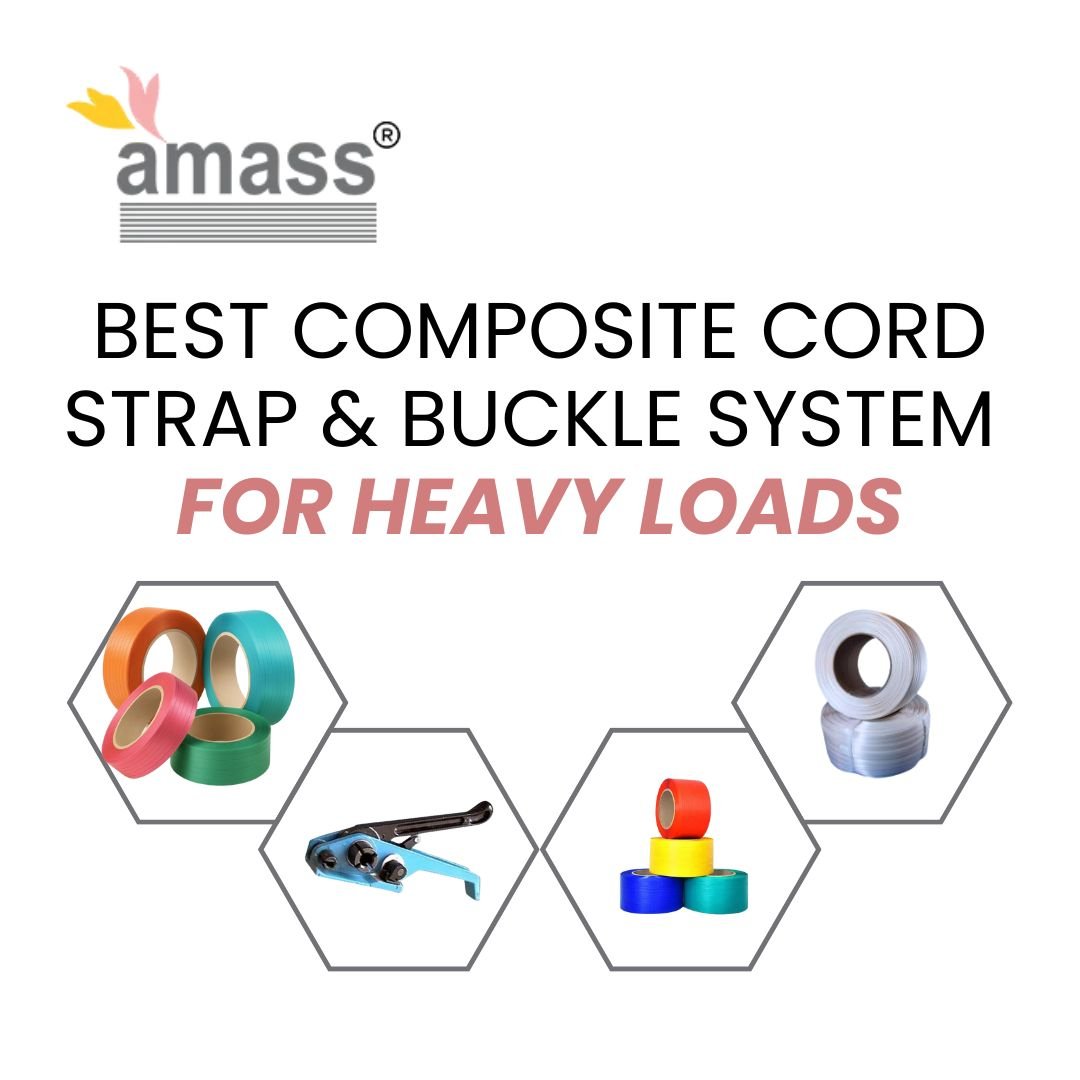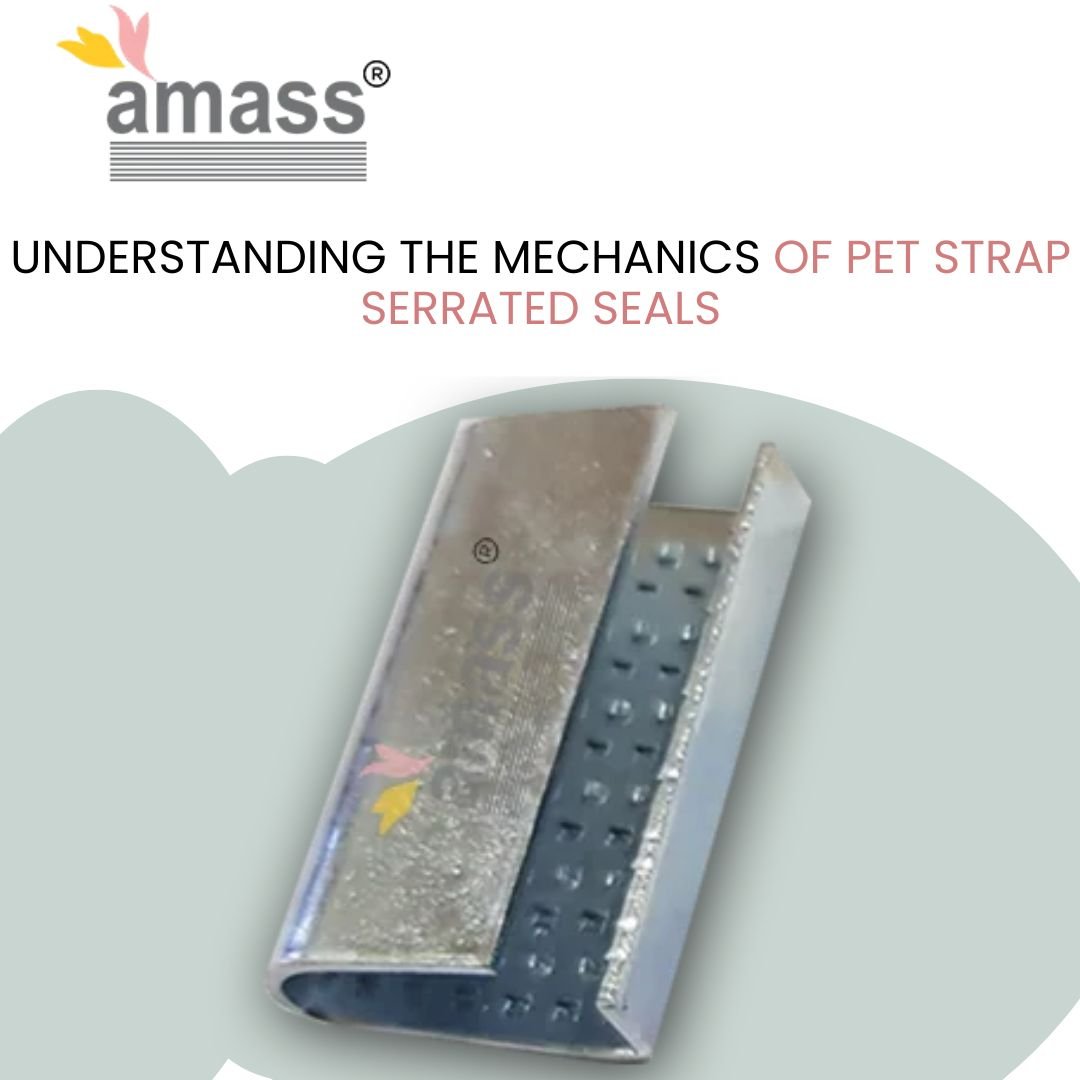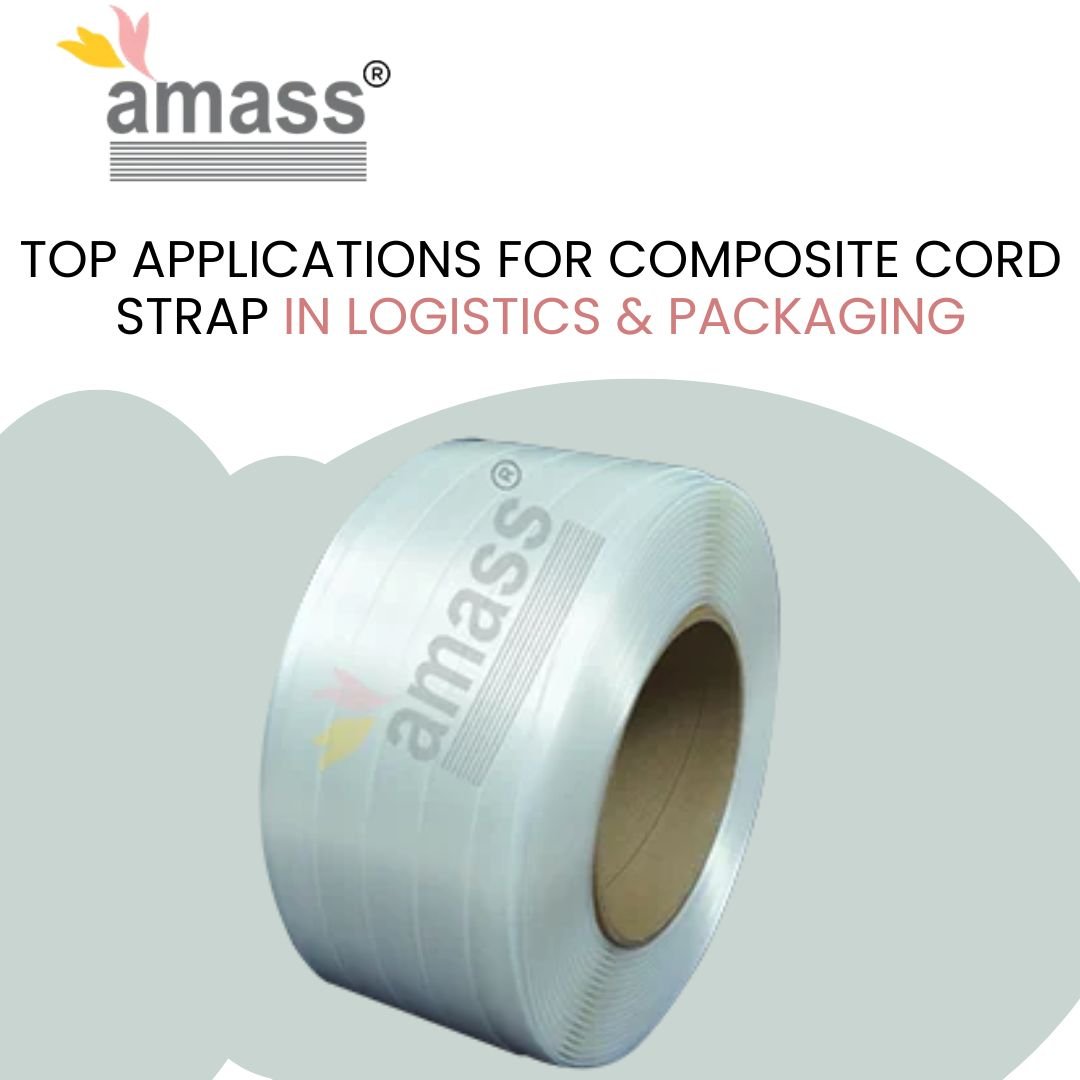Choosing between Composite Cord & Steel Strapping: Buckles & Tensioners

Best Composite Cord Strap & Buckle System for Heavy Loads
November 12, 2025Introduction
Your warehouse floor tells a story. It’s written in sliced palms, corroded straps, and workers who flinch when they reach for steel banding tools. The strapping decision you make doesn’t just secure cargo—it shapes injury rates, operating costs, and whether your team dreads or breezes through load securing. The truth is this: most businesses default to steel because it’s familiar, not because it’s optimal. This guide breaks down composite cord versus steel strapping with a hard look at buckles, tensioners, and real-world performance. You’ll walk away knowing which system fits your operation, how to deploy it correctly, and why the strapping materials market—now valued at $8.79 billion and climbing to $14.09 billion by 2035—is shifting under your feet.
What Makes Composite Cord Different?
Composite cord strapping uses woven polyester fibers coated with a protective polymer layer. It’s engineered to mimic steel’s tensile strength while shedding the weight and hazards. A single roll weighs up to 80% less than equivalent steel, which cuts down on handler fatigue and shipping costs in one move. The material resists moisture, won’t rust in coastal humidity, and flexes under impact instead of snapping. Most composite systems use phosphated or wire buckles that create a joint strong enough to hold 1,100 to 3,300 pounds of break strength, depending on strap width.
Core Material Properties
Composite cord relies on high-tenacity polyester yarns that deliver controlled elongation—typically 2-5%. This stretch absorbs shock during transport, keeping loads stable when trucks hit potholes or forklifts jolt pallets. Steel, by contrast, has near-zero elongation and transfers every impact straight to your product.
What Steel Strapping Still Does Well?
Steel remains the go-to for ultra-heavy loads and extreme heat environments. It handles break strengths exceeding 7,000 pounds and withstands temperatures that would melt polyester. Industries like metal coil securing, lumber bundling, and masonry transport lean on steel because the loads are massive and the stakes for strap failure are catastrophic. But here’s the uncomfortable part: steel’s dominance is narrowing. Over 196,000 U.S. workplace injuries in 2020 involved contact with objects and equipment, and steel strapping—with its sharp edges, tension recoil, and weight—is a frequent culprit.
Buckles & Tensioners Explained
Buckle Types
Wire buckles use a single metal loop that crimps onto the strap and locks under tension. They’re fast, reusable, and rated for medium-duty applications. Phosphated buckles add a protective coating that resists corrosion, making them ideal for outdoor storage or long hauls through variable climates. Galvanized buckles go a step further with zinc plating for marine or chemical exposure.
Tensioner Tools
Manual tensioners rely on lever action to pull strap tight and crimp the buckle. They’re portable and don’t need power, but they demand repetitive wrist flexion that leads to strain injuries over time. Battery-operated tensioners automate the pull and crimp cycle, cutting application time by half and removing the physical load from operators. Pneumatic tensioners deliver the highest tension consistency and speed, ideal for high-volume operations where uniformity matters.
Safety Comparison
Composite cord won’t slice your palm if you grab it mid-tension. It doesn’t store dangerous recoil energy the way steel does—when a steel strap breaks under load, it whips back with enough force to fracture bones. Composite absorbs and dissipates that energy through controlled elongation. Steel also corrodes, creating rough, jagged edges that catch skin and gloves. Workers wearing gloves report fewer hand injuries when switching to composite, and that’s not anecdotal—injury-related costs drop measurably in facilities that make the transition.
Cost Breakdown
Composite strapping costs more per linear foot than steel upfront. But the math shifts when you factor in weight savings during freight, reduced injury claims, faster application times, and zero rust replacement. A mid-sized logistics operation that switched from steel to composite reported a 23% reduction in total strapping costs within 18 months, driven largely by lower shipping weights and fewer worker compensation filings. Steel still wins on raw price per strap, but composite wins on total cost of ownership.
Step-by-Step: Securing Loads with Composite Cord
- Position the strap around the load with 6-8 inches of overlap at the buckle point.
- Thread the tail through the buckle, creating a loop that sits flat against the package surface.
- Insert the tensioner tool onto the strap and engage the tension lever until the strap is taut but not over-stressed—aim for 70-80% of rated break strength.
- Crimp the buckle using the tensioner’s integrated crimping jaw, then release and remove the tool.
- Trim excess strap tail to prevent snagging during handling.
Step-by-Step: Securing Loads with Steel Strapping
- Wrap the steel strap around the load, ensuring it sits in grooves or notches if present on the pallet or product.
- Thread the strap through a steel seal or buckle, overlapping by at least 4 inches for proper grip.
- Use a tensioner to pull the strap tight—steel requires higher tension force than composite to prevent slippage.
- Crimp or seal the joint using a pneumatic or manual sealer, applying enough pressure to deform the seal without cracking the strap.
- Cut the tail with heavy-duty shears, taking care to avoid the sharp edge that forms.
When to Choose Composite
Composite cord thrives in e-commerce, food and beverage, pharmaceuticals, and any industry where operator safety and product surface protection matter. It’s the better pick when loads shift or expand during transport—think corrugated boxes, shrink-wrapped pallets, or delicate machinery. If your team ships internationally and weight surcharges eat into margins, composite’s lighter profile pays for itself in freight savings alone.
When to Stick with Steel
Heavy metal products, brick pallets, and construction materials still demand steel. If your loads regularly exceed 5,000 pounds or face open-flame exposure, steel’s rigidity and heat tolerance keep it relevant. Just budget for the safety equipment, training, and occasional ER visit that come with the territory.
FAQs
Can composite cord replace steel for coil strapping?
Not for heavy steel coils above 8,000 pounds. Composite maxes out around 3,300 pounds break strength, which handles most logistics and packaging scenarios but falls short for industrial metal bundling where steel’s 7,000+ pound capacity is non-negotiable.
Do composite straps work in freezing temperatures?
Yes. Polyester composite maintains flexibility and tensile strength down to -40°F, unlike some plastics that become brittle. Steel performs in extreme cold too, but condensation leads to rust once loads return to warmer climates.
How long does composite strapping last in outdoor storage?
UV-treated composite cord resists degradation for 12-18 months under direct sunlight. Steel rusts within weeks in humid or coastal environments, requiring replacement or protective coatings that add cost.
Is reusability possible with either option?
Steel buckles and straps can be reused if undamaged, but corrosion limits lifespan. Composite buckles are reusable, but straps typically aren’t due to stress from tensioning and crimping.
Conclusion
Pick the strapping system that matches your load profile, not the one you’ve always used. Composite cord delivers safety, cost efficiency, and flexibility for most modern logistics and packaging applications. Steel still has a place where brute strength trumps all other factors. The decision comes down to honest accounting: weigh injury risk, total cost, and operational speed against the specific demands of what you’re securing.
Amass Strap engineers composite cord strapping systems that protect your products and your people. Our buckles, tensioners, and high-tenacity straps deliver industrial-grade performance without the hazards of steel. Visit amass-strap.com to request samples, technical specs, and a cost comparison tailored to your operation. Make the switch that keeps loads secure and workersds secure and workers safe.




